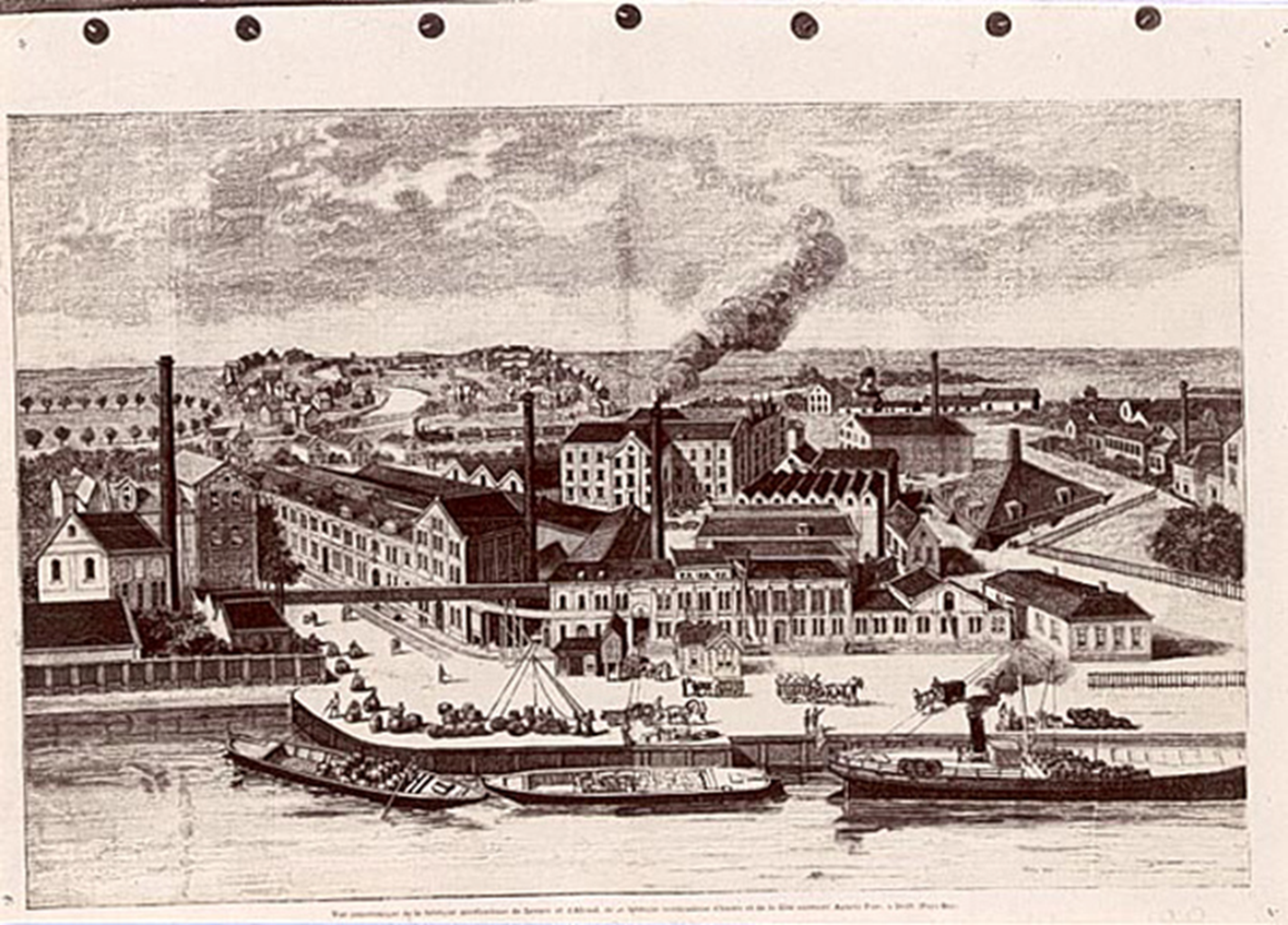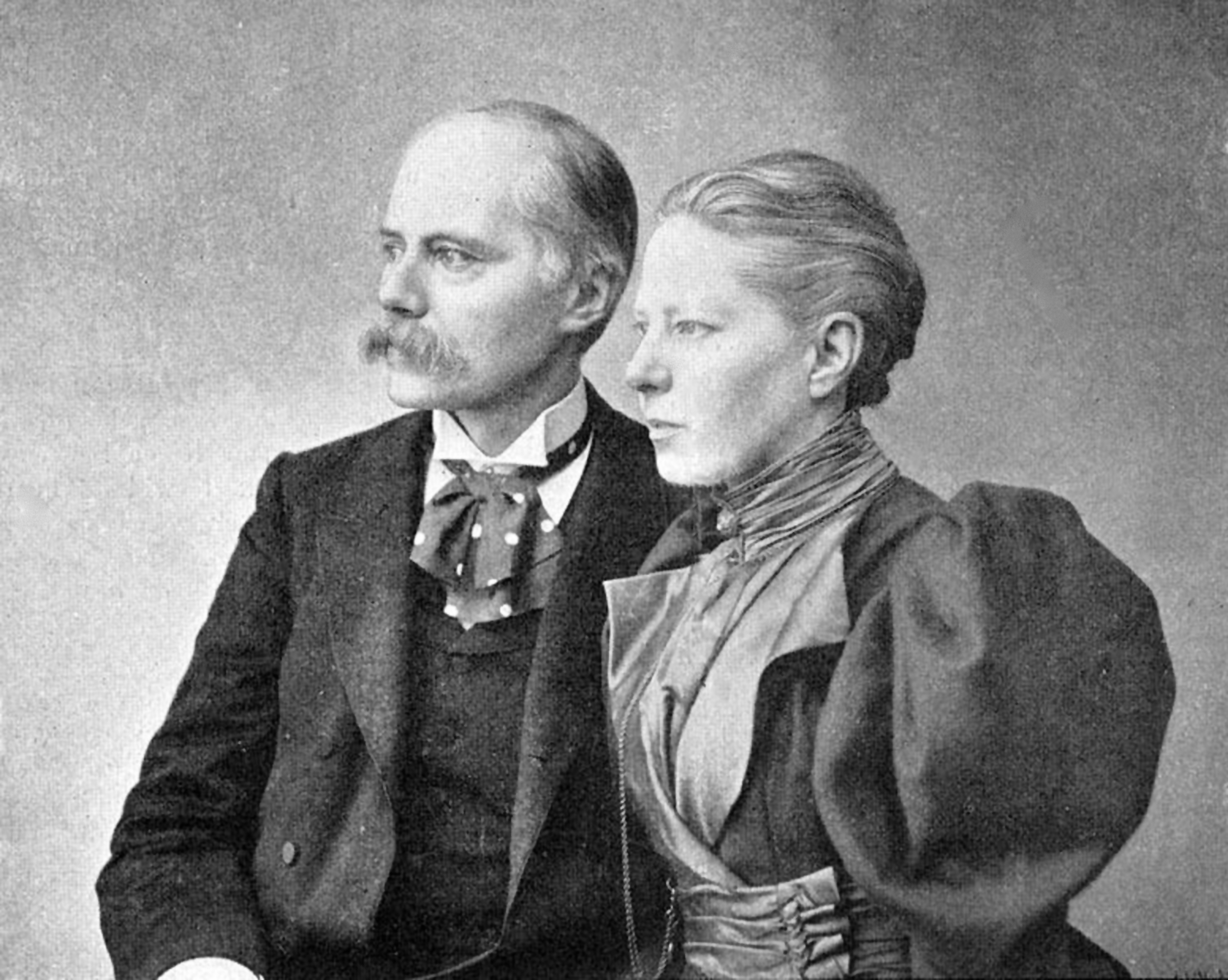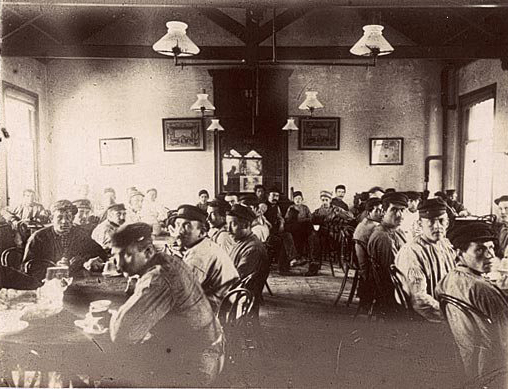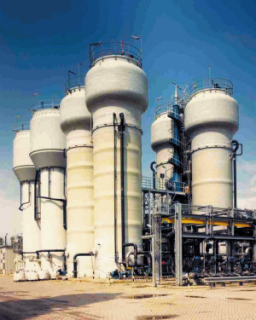Van Marken and the NG&SF
1869 was a big year for Jacques van Marken, the first student to graduate in Applied Chemistry from the Delft Polytechnic (as the TU Delft was then). He founded the Delft Yeast and Spirits Company (NG&SF, figure 1) to produce baker’s yeast, and married Agneta Matthes (figure 2). Agneta became an active partner in the business. In 1873, they bought a perfume business, and in the 1880s added oil, margarine, gelatine and glue to their products. They were enlightened employers, providing their employees with benefits unknown in the 19th century (figure 3).

Figure 1. The Netherlands Yeast and Spirits Factory in 1889.

Figure 2. Jacques and Agneta van Marken.

Figure 3. The employees of the NG&SF and their families were provided with a wide range of benefits belonging to the factory including a school, shops, a gym, a cantine and a meeting hall. There were pensions, opportunities to buy shares in the factory, and a newsletter explaining everything from the financial situation of the business to changes in the staff. When Beijerinck was appointed, there were articles about what he would be doing, and why it was necessary.
Delft’s Microbiology Professors advise
In 1884 Van Marken appointed Martinus W. Beijerinck to head his new industrial microbiology laboratory. When Beijerinck became a Professor in 1895, the tradition that Delft’s Microbiology Professors advised NG&SF and its later incarnations began. At the beginning of the 20th century, NG&SF expanded into Germany, Portugal and Belgium and other parts of the Netherlands. They added solvents and ether to their product range.
Penicillin under the codename Bacinol
During World War 2, with the cooperation of Professor A.J. Kluyver, they secretly produced penicillin under the codename Bacinol without being discovered by the German occupiers. After the War, the company expanded its antibiotic production.
Wastewater treatment and biogas production
In 1968, NG&SF merged with a pharmaceutical company, Brocades, becoming Royal Gist-Brocades. They expanded into wastewater treatment and biogas production in the 1980s (figure 4), with the cooperation of Delft’s Professors Gijs Kuenen and Sef Heijnen. In this wastewater treatment system, in 1990, Arnold Mulder discovered the now-famous Anammox reaction where environmentally damaging ammonia and nitrite are biologically converted to harmless N2. In 1998, Gist-Brocades was taken over by DSM.

